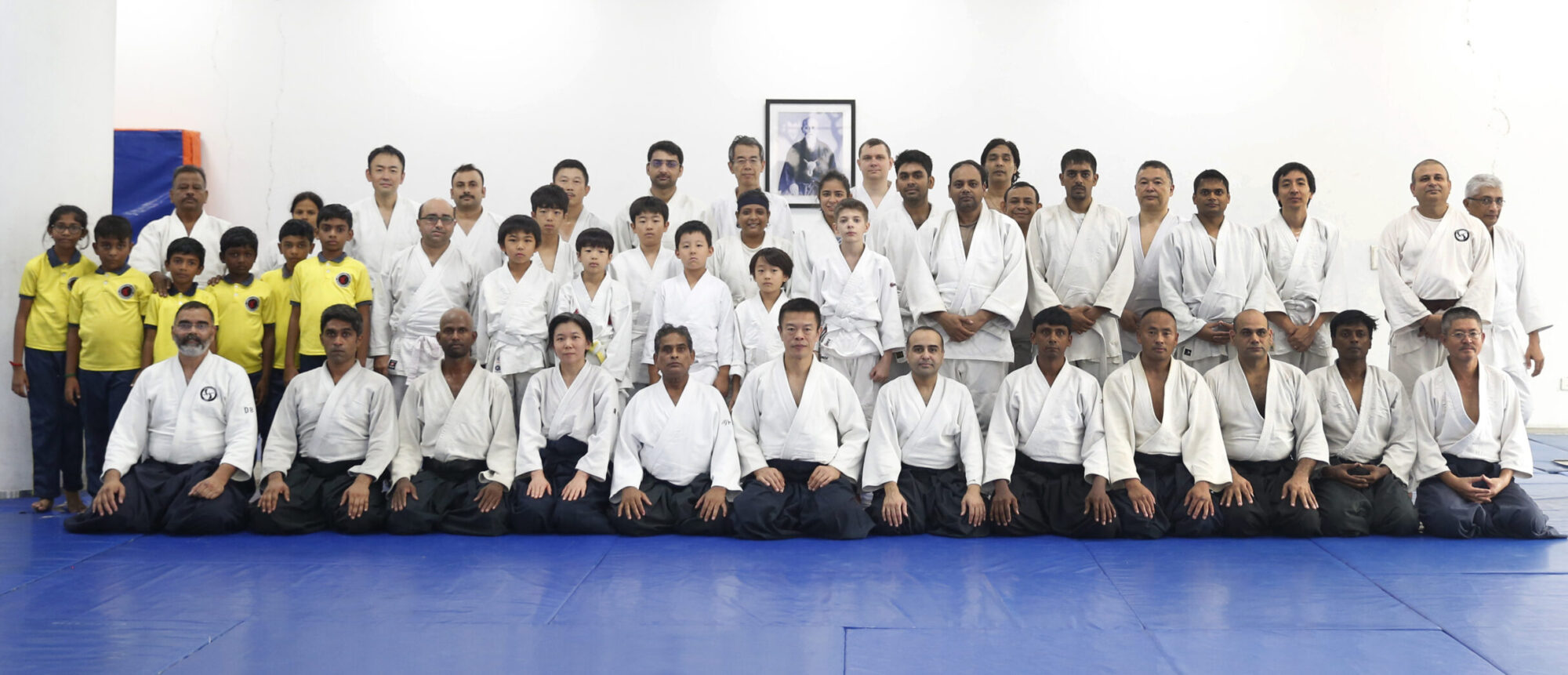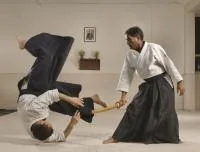Paritos Kar has been teaching Aikido, a non-aggressive Japanese martial art form, in Delhi for five years
WHEN you watch the petite Paritos Kar pin his six-foot-tall opponent down to his knees by simply standing his ground and blocking a punch by a turn of his wrist, it is evident that size does not matter in the world of martial arts. Kar is a fourth-degree black belt in Aikido, a Japanese martial art form which does not rely on speed and power to gain the upper hand in a confrontation. “This form relies on grace and fluid body movements, together with the ability to control one’s thoughts,” explains sensei Kar, who has been running his dojo (classroom) at the Arya Samaj Mandir premises in Greater Kailash, Part II, for the past 10 months. «In this technique, we primarily teach self-defence, not attack. Attack is only used once all other methods have failed,» says Kar, helping his opponent up.
It is evening, and Kar is surrounded by about 25 students in traditional uniforms — a white cotton top and pleated black skirt called the hakama. The class is about to commence. Before the routine kicks in, the students pay tribute to the founder of Aikido, Osensei Morehei Ueshiba, by bowing in respect in front of his black-and-white portrait on the wall. Ueshiba was a 20th Century Japanese martial arts practitioner who believed in a peaceful and non-confrontational technique against an adversary. “AI” stands for harmony, “KI” is the universal energy and “DO” translates into the way.
For Kar, it all began 24 years ago, when he went to Tokyo as a visiting tourist after graduating from university in West Bengal. Smitten by Aikido, he stayed on for 15 years and mastered, apart from Aikido, the Japanese language. Kar has been teaching the martial art form for five years in Delhi after a brief stint in Russia.
Aikido is as much about spirituality as it is about non-aggression and Kar makes it a point to set aside an hour every day for meditation and yoga. “Aikido helps improve flexibility, boosts confidence, increases attention span, humility and tolerance towards others,” Kar says. As Arshad, 40, a sports teacher by profession, lunges towards Kar with a raised leg, in a sudden attack, Kar patiently rotates his hips, grabs hold of Arshad’s leg and pushes it down to the floor in one artistic move. “Being a taekwando student for 30 years, I was unable to connect with my spiritual being. This technique helped me maintain control and also defend myself in case of an attack,” explains Arshad, a first-degree black belt in Aikido, after he falls flat on his back
Kar says there are no age restrictions in Aikido, since it is not physically demanding. “Yet, it is a great way of keeping fit. A one-hour routine can burn 300 calories,” he adds. With only a handful of Aikido practitioners in India, the exclusivity of this technique can be gauged by that fact that there are no competitions held here*.
(*This statement is inaccurate, because in general there are no competitions in Aikido. To quote from “Traditional Aikido”, by Morihiro Saito, Vol. V, “It is a well-known fact that matches are prohibited in Aikido. This is because Aikido has inherited a number of lethal techniques from its Founder, which render matches too dangerous an exercise, and also because the art purports to place no restrictions on every conceivable movement.” – Y.P.)





